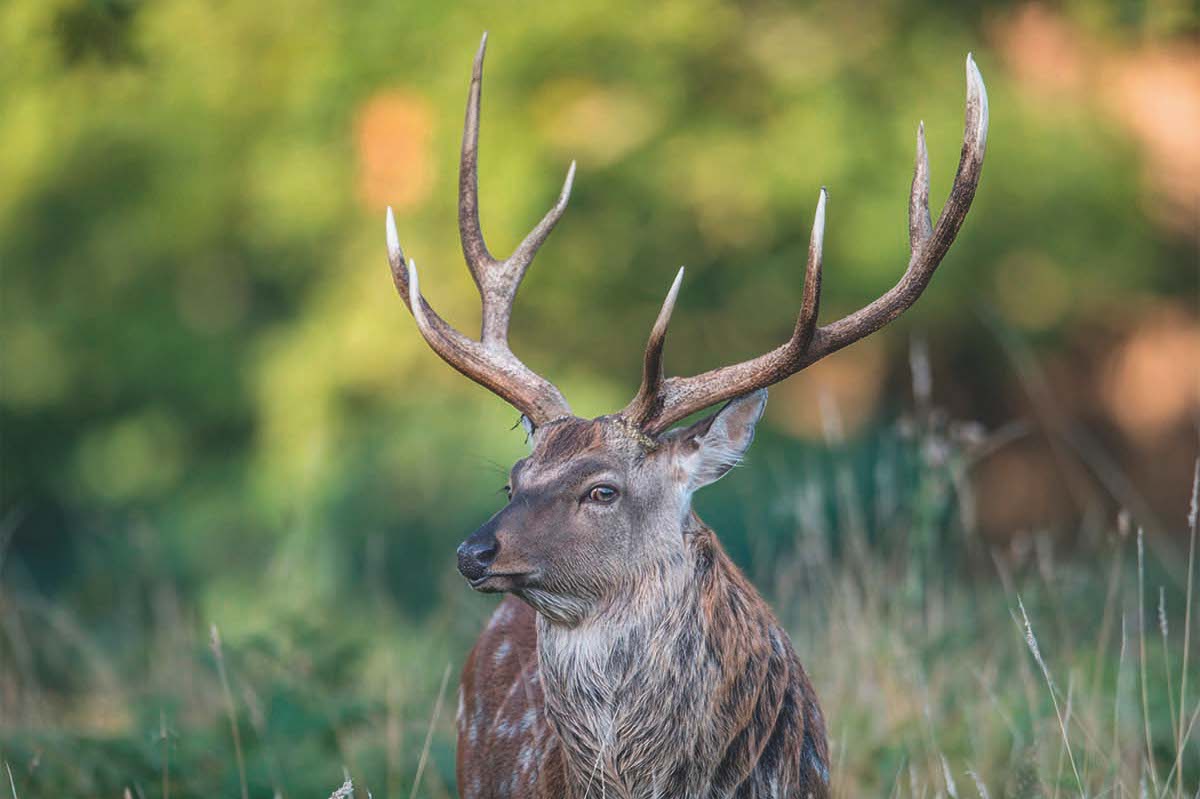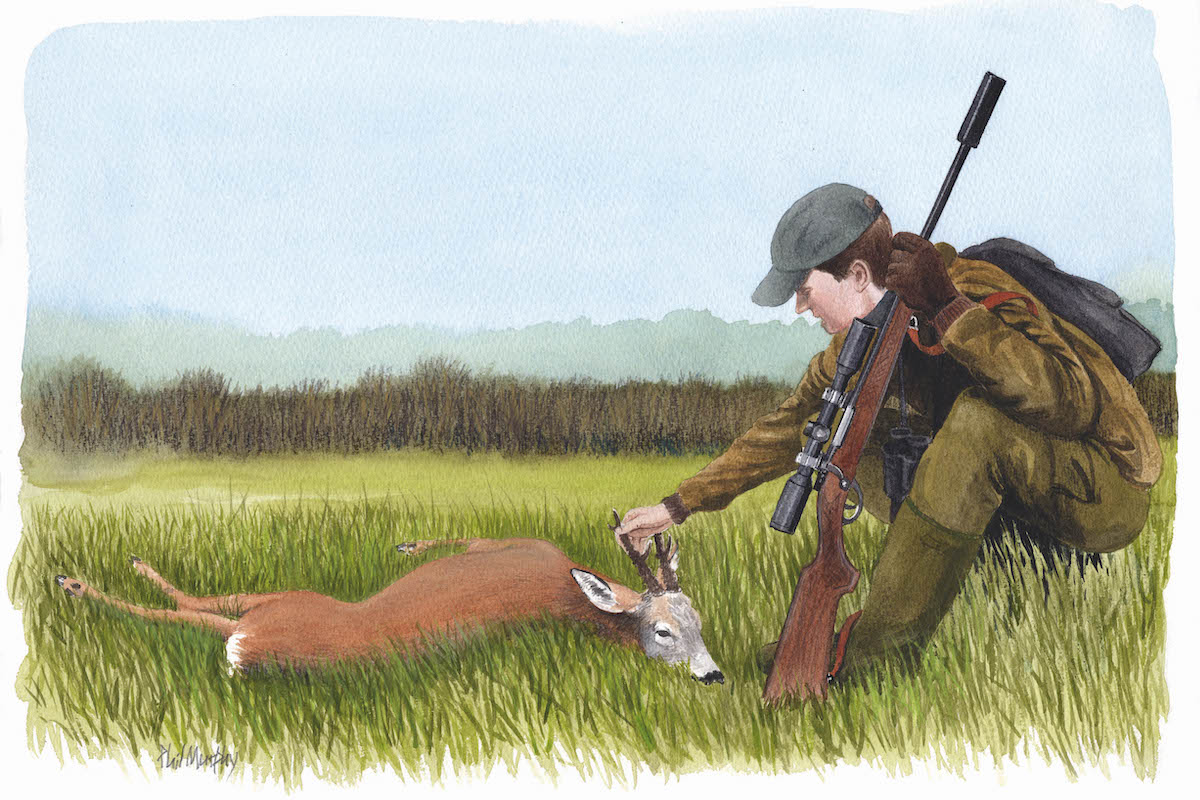Sika guide – cervus nippon
Sika are one of the more vocal - and sometimes ferocious - deer species, says Charles Smith-Jones

Sika deer (Cervus nippon)
Sika deer quick facts
Distribution
Found across most of Japan with scattered populations in China and the east of Russia. Introduced elsewhere including parts of Europe, Madagascar, New Zealand, the Philippines and the USA.
UK Distribution
Widespread in Scotland with most in the north and west. In England, the main populations are in Dorset, the New Forest and Cumbria/Lancashire with smaller herds in Kent, East Anglia and elsewhere. Some small but localised populations in southern Wales.
IUCN Red List status
Least concern, population increasing.
Food
A grazer and browser that feeds on a variety of grasses, sedges, dwarf shrubs and other plants, as well as the leaves and shoots of trees and other woody plants. Fruits, nuts, fungi are taken according to season, and tree bark is stripped when food is scarce.
Habitat
A secretive deer that prefers dense forested areas but also inhabits heathland, thick scrub, marshes or grassland. Areas with acid soils seem to be preferred.
Rut
From September until mid-November.
Birthing
A single calf is usually born in May or June. Twins are rare.
Antler cycle
Casting in March to May, clean by August or September. Older animals cast and clean first.
Lifespan
Up to 18 years in the wild.
Height (at shoulder)
Stag 95 cm, hind 85cm.
Weight
Stag up to 70kg, hind up to 40kg.
Vocal sika
It’s late afternoon in early October. The light is starting to fail and, as you wait in your high seat, an eerie sound drifts across the heather-covered heath. A rising and falling whistle, it is repeated twice more and seems to be coming from a block of conifers beyond the clearing. As you listen, straining your eyes for movement, another stag replies to the challenge. The sika rut is in full swing but the light has gone and you will see nothing tonight. Maybe dawn tomorrow will be more productive.
The sika is one of the more vocal deer species. Apart from the distinctive whistle, the rutting stag makes a variety of other calls, which might include a moaning wail ending with a grunt, a challenging snort or what has been described as a witch’s cackle. Hinds are rather quieter, but a suspicious animal makes a piercing squeak, or a series of them, to warn others of their disquiet. An unlucky stalker may even find themselves followed through the woods by a hidden animal, squeaking from cover all the while. (Read why sika deer are posing a threat to our native reds.)

The sika’s summer coat can sometimes be mistaken for that of the fallow
Sika origins
The sika is an Asian species that first arrived here in the mid-19th century. As its name is taken from the Japanese shika, meaning deer, we refer to it simply as sika. It has several subspecies and UK animals appear to have come from Japan, Formosa and Manchuria.
Although there seem to have been around 50 separate introductions, most appear to have been of the Japanese subspecies. It is widely thought that the vast majority of wild sika here descend from just one stag and three hinds introduced to Viscount Powerscourt’s deer park in Ireland. All the subspecies can interbreed, though we tend to treat UK sika under the general description of Japanese. They can also hybridise with the closely related red deer, and there are continuing concerns about the genetic integrity of the latter as a result. (Guide to the six British deer species.)
The spotted summer coat might perhaps be mistaken for that of the similarly sized fallow but the tail is shorter, less mobile and typically white with a thin black line down the centre. The white rump patch is edged with black which extends down to the hocks, and a pale oval metatarsal marking on the hind legs is usually visible.
The winter coat is more of a sooty grey; stags can appear almost black and grow a thick mane during the rut. They also exude milky ‘tears’ from the suborbital glands in front of the eyes at this time. The typical antlers of a mature stag carry no more than eight points, four on each side.
Rutting stands
Breeding behaviour can vary. Where there are high population densities, stags may set up rutting stands in a communal lekking area, much in the same manner as fallow, but more often a stag will establish his own territory and mark it with scrapes, frayed trees and wallows. One characteristic activity of sika stags is bole scoring, in which the tree bark is deeply raked with the brow tines of their antlers. The territory is patrolled by the stag, which typically roams it at dusk and attempts to gather up and hold any hinds that pass through it. At other times, sika stags can act more like red deer and not establish territories, simply collecting and defending parcels of hinds against any challengers.
Like red deer, sika can vary in size according to the habitats occupied. Lowland animals tend to be much larger than those found in poorer upland habitats. The sika stag has a special reputation for ferocity among stalkers, who have occasionally found themselves or their dog attacked by a wounded animal.
Sika venison is finely grained and full of flavour, and many rate it higher than that from other deer. It contains more intramuscular fat than is usual in venison, which helps prevent it drying out during cooking. The taste has been described as a cross between beef and lamb. (Read which species produces the most delicious venison?)










